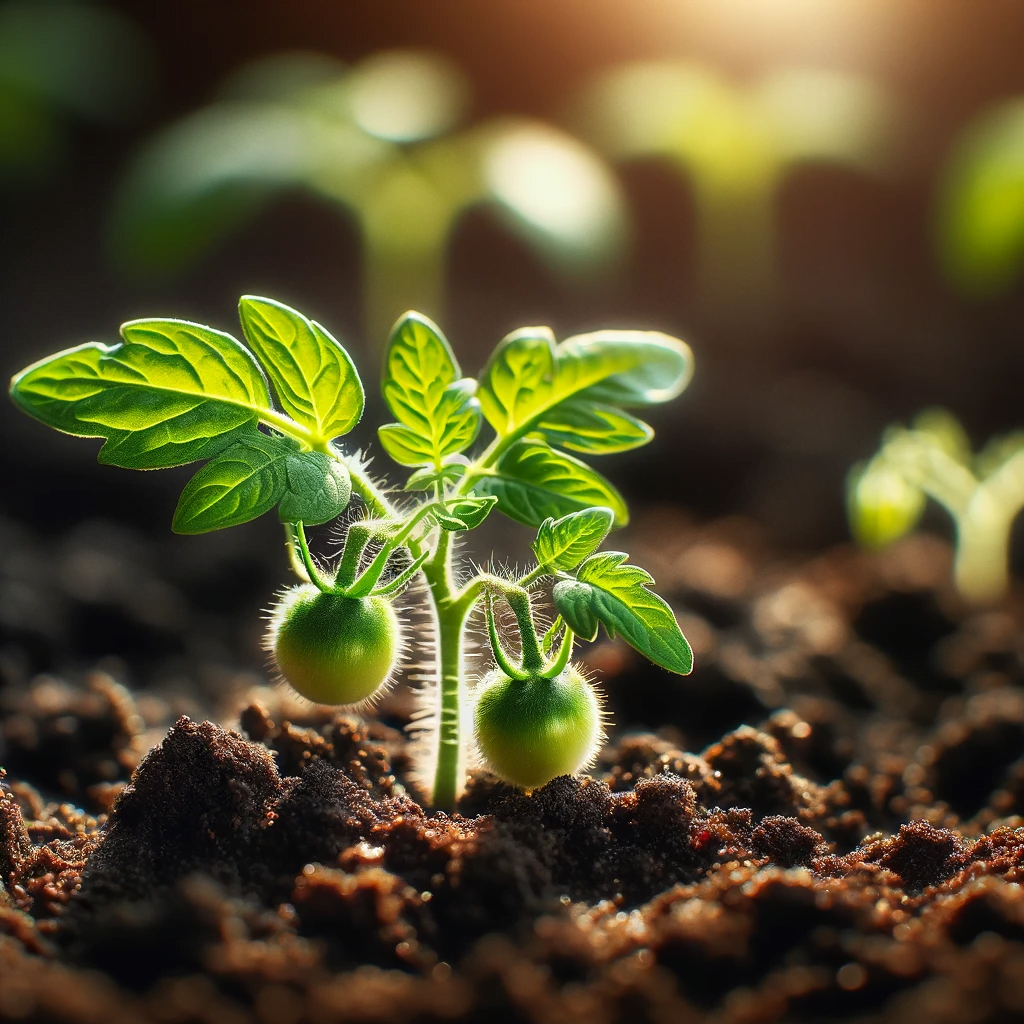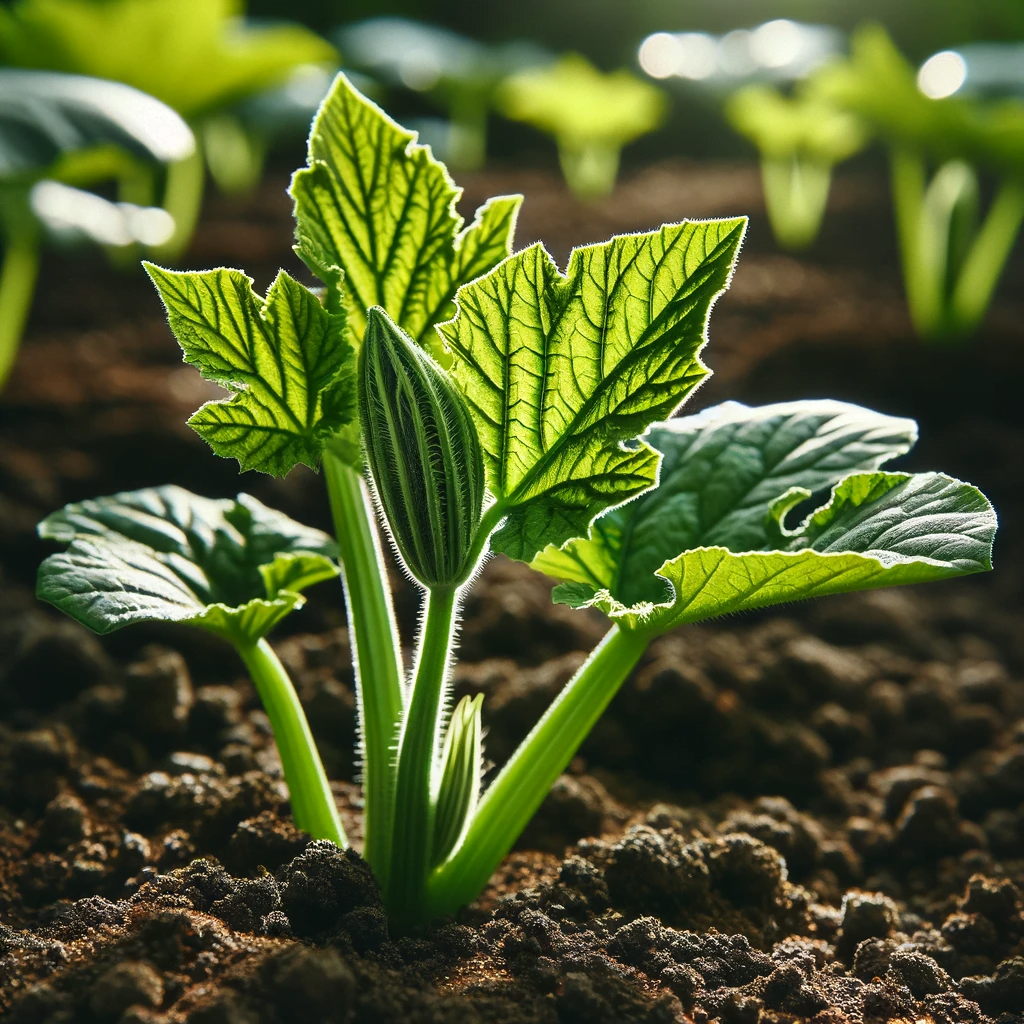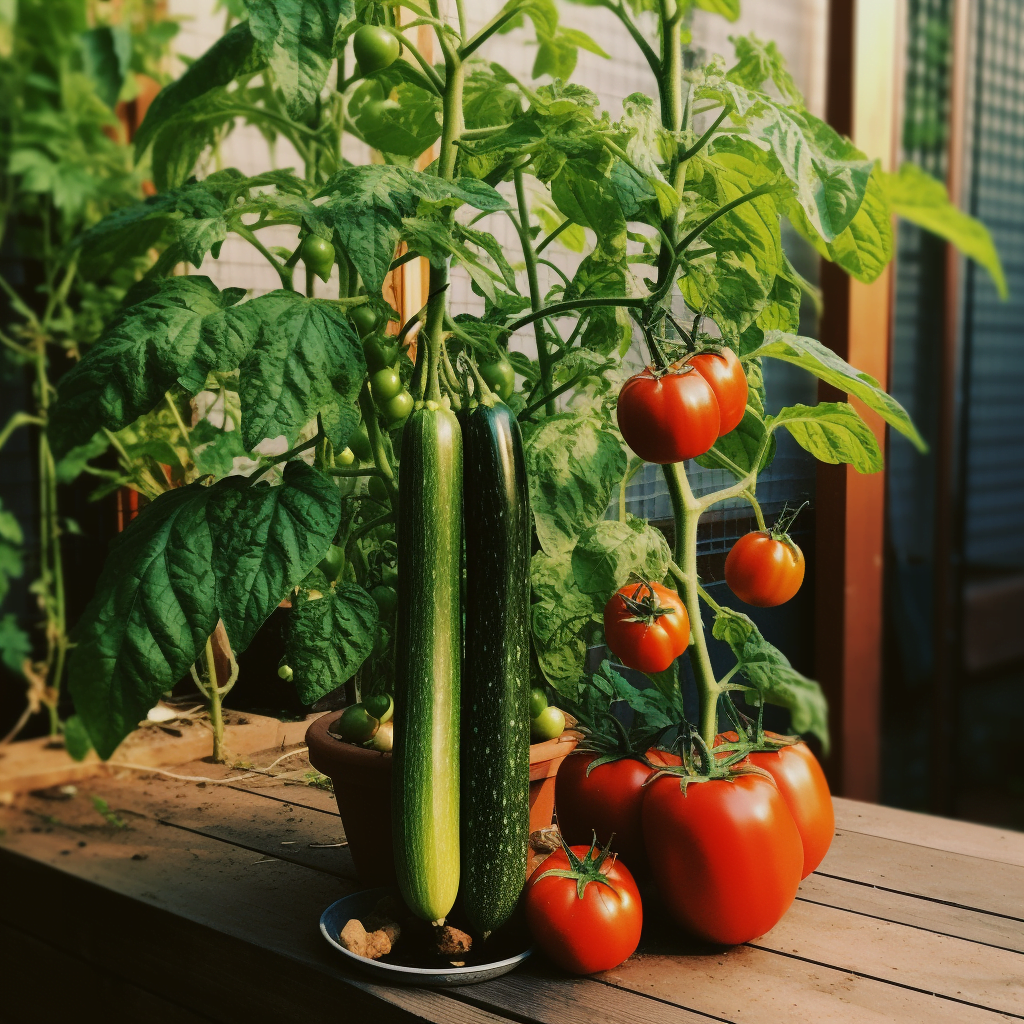Introduction
If you’re tight on garden space, you may be wondering if it’s possible to plant zucchini near your tomato plants. The concept of companion planting involves strategically placing crops together so they can benefit and assist each other’s growth. Done correctly, interplanting zucchini and tomatoes can allow you to produce more food from your garden. However, there are also some potential pitfalls to consider.
In this in-depth guide, we’ll cover everything you need to know about growing zucchini with tomatoes. You’ll learn about ideal conditions, plant compatibility, spacing needs, pest management, and harvesting times so you can decide if these two summer staples can successfully be grown as neighbors. Let’s dive in!
Can You Grow Zucchini Near Tomatoes?
The short answer is yes, you can successfully grow zucchini near tomato plants provided you give them both enough space, light, water, and nutrients to flourish. Pay close attention to their spacing and support needs, harvest frequently, and use companion plants to attract pollinators and beneficial insects.
Companion Planting: An Overview
Companion planting dates back centuries and is based on the observation that certain plant combinations can have a synergistic effect. The Three Sisters tradition practiced by Native American tribes is one of the most iconic examples, involving growing corn, climbing beans, and squash together.
Each sister plant contributes something beneficial to the others. The tall corn stalks offer support for the climbing bean vines. The bean plants help nourish the soil with nitrogen. And the large squash leaves and vines suppress weeds and retain moisture in the soil.
There are countless other successful plant pairings that can help deter pests, attract pollinators, provide shade or structural support, improve flavors, and more. Some well-known ones include:
- Basil and tomatoes: Basil is thought to enhance tomato growth and flavor. The pungent scent may also help repel pests.
- Marigolds and tomatoes: The roots of marigolds release compounds that protect tomatoes from nematodes and other harms.
- Radishes and squash: Radishes lure cucumber beetles away from squash plants.
- Carrots and leeks: The shallow roots of carrots don’t compete with the deeper leek roots.
However, not all plants make ideal companions. Putting the wrong ones together results in competition, attracts shared pests, or inhibits proper development. Some incompatible combinations include:
- Cabbages and strawberries: Cabbage stunts strawberry growth.
- Potatoes and tomatoes: Vulnerable to the same blights.
- Onions and beans: Onions stunt bean plant development.
The key is understanding the specific needs of each plant and observing how they interact over time. When done thoughtfully, mingling certain crops together allows you to maximize diversity and productivity even in small garden plots.
Zucchini and Tomatoes: The Compatibility Test
Now that we’ve covered some companion planting basics, let’s take a close look at tomatoes and zucchini and whether they make suitable companions:
Tomato Profile
Tomatoes are a warm season vegetable that thrive in consistently warm weather. Most varieties grow best with temperatures around 70-85°F during the day and 60-70°F at night. The plants require full sun exposure (at least 6 hours of direct sunlight daily) and moderately fertile, well-draining soil. A pH between 6.0-6.8 is optimal.
Tomatoes come in a range of sizes, shapes, and colors. Bush types produce a determinate number of fruits while vining indeterminate tomatoes continue to grow and produce throughout summer. Some popular varieties include cherry, roma, beefsteak, and heirloom.
Tomatoes are heavy feeders that deplete nutrients from soil fairly quickly. A thick layer of mulch helps conserve moisture and prevent weeds. Caging or staking up indeterminate varieties keeps vines contained and prevents fruits from dropping onto the ground. Left unsupported, tomato plants can easily spread 3 feet or more.
Tomatoes are prone to various pests and diseases including hornworms, aphids, nematodes, blights, blossom end rot, and more. Rotate planting location annually and remove any diseased plants promptly to avoid spread.
Zucchini Profile
Like tomatoes, zucchini thrives in consistently warm weather and needs full sun exposure. Ideal growing temperatures range from 60-75°F. Zucchini prefers moist, fertile soil with lots of organic matter. Soil pH between 6.0-7.0 is best.
There are bush and vining varieties of zucchini ranging from compact 1-2 foot plants to vines that can spread 5-10 feet. The main types are green and yellow straight-necked zucchinis, round or scalloped varieties, and miniature ‘baby’ zucchinis.
Zucchini plants also tend to deplete nutrients rapidly. Side-dress with a nitrogen-rich fertilizer or compost mid-season to continually fuel growth. Mulch helps suppress weeds and retain moisture. Using stakes or trellises will support the flexible stems and keep fruits off the ground.
Some common zucchini pests are cucumber beetles, aphids, and squash bugs. The large leaves also invite powdery mildew later in summer. Crop rotation, row covers, and maintaining good air circulation can help prevent issues.
Potential Benefits of Planting Together
Looking at their similar profiles, tomatoes and zucchini seem like suitable companion plants, with a few potential benefits:
- Efficient use of garden space by planting closely together
- Zucchini leaves may help repel beetles from reaching tomato plants
- Tomato vines can provide partial shade for zucchini plants
- Harvest times coincide for making recipes together
- Your garden has more diversity which deters pests
Potential Drawbacks
However, there are a few aspects to be cautious of as well:
- Can attract and spread some of the same pests and diseases
- Cross-pollination may occur if flowering simultaneously
- One crop may end up shading out the other
- Vines make it hard to trellis/support both effectively
- Nutrient, water, and space competition if overcrowded
The Long Answer: Growing Tips
If you want to try your hand at companion planting zucchini and tomatoes, here are some tips for success:
Light Requirements
Select a garden spot that receives full sunlight – at least 6-8 hours of direct sun daily. South or west-facing locations are ideal. Both tomatoes and zucchini depend on sufficient sunlight to thrive and produce.
Watering Needs
Tomatoes and zucchini require consistent moisture for healthy growth and fruit production. About 1-2 inches of water per week is sufficient, whether provided by rainfall or supplemental irrigation. Soaker hoses or drip irrigation direct water right to the root zone and keep foliage dry to prevent disease. Adding 2-3 inches of organic mulch helps significantly retain moisture in the soil.
Soil Prep
Prepare your garden beds by mixing 2-4 inches of aged compost or well-rotted manure into the top 6-12 inches of soil. This increases fertility and nutrient availability. The ideal soil pH is around 6.5, so amend with lime if needed to hit this target. Adding mycorrhizae fungi can boost root health. Producing large fruits quickly depletes nutrients, so side dress with an organic vegetable fertilizer or compost tea mid-season.
Plant Spacing
Proper spacing prevents plants from crowding each other. Give each tomato plant around 24-36 inches of space. Bush zucchinis need at least 18-24 inches between plants while vining varieties require 24-36 inches. You can always start seeds or transplants closer together and thin later. Just ensure adequate airflow and light penetration. Interplanting radishes, greens, or herbs can maximize space efficiency.
Support Methods
Tomato vines and zucchini stems will quickly sprawl if not supported properly. Set up stout cages, trellises or a series of stakes and strings when transplanting. You may need one trellis running down the center of a bed with tomato plants on one side and zucchini on the other. Or position tomato towers in between zucchini mounds. This takes some planning!
Companion Plants
Interplanting small flowers like marigolds, nasturtiums, and calendula helps attract pollinators. Onions and garlic may help repel certain pests. Quick-growing radishes and salad greens like lettuce and spinach make good space fillers. Just ensure companion plants won’t overtake the tomatoes or zucchini.
Crop Rotation
Rotating crops annually is always wise to prevent soil-borne disease carryover. Don’t plant tomatoes, zucchini or other cucurbits in the same spot more than 2 years running.
Plant Profile Spotlights
Now that we’ve covered general growing conditions and tips, let’s take a closer look at some of the best tomato and zucchini varieties to grow together:
Tomatoes
Cherry Tomatoes – These bite-sized tomatoes grow well even in containers. Varieties like Super Sweet 100 or Sun Gold produce vigorous vines with hundreds of sugary tomatoes perfect for snacking.
Roma Tomatoes – A classic paste tomato ideal for sauces and canning. Roma varieties are compact and grow well in
cages or tied to stakes. Plum Regal and Amish Paste are heavy yielding heirloom types.
Celebrity Tomatoes – One of the most disease resistant hybrids, Celebrity withstands late blight and nematodes. The smooth, red oblong fruits are great sliced for sandwiches.
Early Girl Tomatoes – An early producing variety, you’ll get fruit within about 60 days from transplanting. Delicious small-medium tomatoes keep going through summer.
Chocolate Cherry Tomatoes – These dark-hued beauties add visual intrigue. Rich flavor with a hint of smokiness. Can be finicky, so provide good conditions.
Mortgage Lifter Tomatoes – A big, meaty pink heirloom beefsteak type. Sets fewer fruits per vine but each tomato can weigh 2-3 lbs. Intimidating to pests!

Zucchini
Black Beauty Zucchini – A classic dark green heirloom known for productivity and disease resistance. Open growth habit allows good airflow.
Eight Ball Zucchini – Cue ball sized, green-striped fruits are perfect single servings. Compact bush plant good for containers.
Magda Zucchini – Prolific Lebanese type produces tender fruits on a compact, multi-branched plant. Resists powdery mildew well.
Tromboncino Zucchini – Unusual loaf-shaped Italian squash. Vines grow 12+ feet! Harvest young with edible skin and seeds.
Zephyr Zucchini – Pale yellow summer squash is tender and flavorful. Open growth habit deters mildew. Prolific and delicious.
Dundoo Zucchini – Butter-yellow scalloped or ‘pattypan’ shaped fruits. Bush habit makes a pretty container plant. Pest tolerant.
Planting Tips and Timing
Tomatoes and zucchini should be started from seed indoors 6-8 weeks before your last expected spring frost. Or plant nursery transplants after danger of frost has passed when soil reaches at least 65°F.
Stagger planting dates 2-3 weeks apart for a continuous harvest. Succession plant fast growing varieties like bush zucchini and determinate tomatoes first. Follow with vining heirloom types.
North of zone 9, start seedlings indoors under grow lights. Harden off before transplanting. Use black plastic mulch to warm the soil and row covers for extra frost protection.
In zone 9 and warmer, you can direct sow seeds into the garden after the soil thoroughly warms. Mulch beds after seeding to retain heat and moisture.
Container Gardening Tomatoes and Zucchini
Short on garden space? You can grow patio varieties of both zucchini and tomatoes together in containers. Focus on compact, determinate tomatoes and bush zucchini.
Use at least 10-15 gallon containers. Add drainage holes and use a quality potting mix fortified with worm castings or compost. Site the containers together in full sun. Add trellises or cages to support plants as they grow.
Cherry tomatoes, Roma types, Early Girl, and Celebrity are container-compatible tomato varieties. Good zucchini choices include Black Beauty, Magda, Dundoo, and Eight Ball.
Monitor soil moisture frequently. Container plants dry out quicker than in-ground. Feed weekly with a water soluble fertilizer made for vegetables.
Ideal Growing Conditions
Here are the optimal conditions to keep in mind when growing zucchini with tomatoes:
Sun: At least 6-8 hours of direct sunlight daily
Soil: Well-draining, fertile loam with added compost
Water: 1-2″ per week, avoid overhead watering
Temperature: Around 70-80°F
pH: Between 6.0-6.8
Spacing: Tomatoes 2-3′ apart, Zucchini 18-36″ apart
Support: Stakes, cages, or trellises to contain vines
Fertilizer: Compost tea or all-purpose organic fertilizer
Pest Control: Row covers, organic sprays, beneficial insects
Mulch: 2-3″ layer maintains soil moisture and suppresses weeds
Crop Rotation: Avoid planting in same spot 3+ years running
Adhering to these best practices provides the light, moisture, space, and nutrients both crops need to thrive!

Pest Management
Some pests and diseases to watch for when growing tomatoes, zucchini, and other cucurbits together include:
Aphids – Small sucking insects that cluster on leaves and stems. Deter by spraying a strong stream of water or introducing ladybugs.
Cutworms – Caterpillars that chew through plant stems at the soil line. Protect transplants with collars.
Cucumber Beetles – Feed on leaves and carry bacterial wilt disease. Hand pick early or use row covers.
Tarnished Plant Bugs – Cause cat facing deformities on fruit. Knock off with water or attract beneficial insects.
Powdery Mildew – White fungal coating on leaves worsened by humidity. Improve air circulation and avoid wetting foliage.
Blossom End Rot – Caused by calcium deficiency. Maintain even soil moisture levels.
Mosaic Virus – Transmitted by aphids. Remove infected plants promptly and control aphid populations.
Crop rotation, good sanitation, proper spacing, consistent watering, and maintaining plant vigor are the best defenses against pests and diseases!
Conclusion
Companion planting tomatoes and zucchini together can be done successfully with careful planning and attention to giving each crop the proper growing conditions. Take advantage of their complementary pest repelling abilities but don’t overcrowd them. Adhere to proper spacing guidelines and provide sturdy trellises or cages. Choose suitable varieties for your climate and space limitations. Time plantings appropriately so both vegetables hit their prime simultaneously for combined summer harvests!



